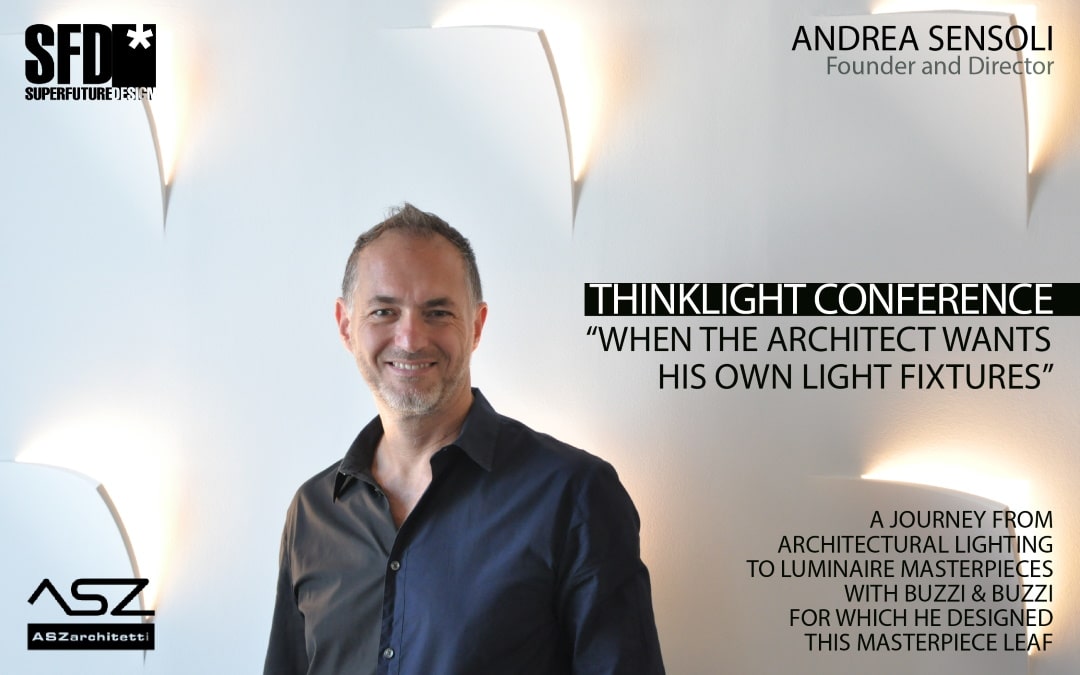ASZarchitetti founder, Andrea Sensoli started working with the lighting company BUZZI&BUZZI in the nineties to develop several unique fixture that would blend into the architecture. Out of this collaboration ‘LEAF’ was born, a fixture that completely disappears into the walls, and considered an icon.
When a lighting fixture is deeply integrated into the architectural frame that you can no longer see the lines, it’s described as architectural lighting. This is observed in ‘LEAF’, where the observer can simply see outlined and illuminated surfaces. ASZarchitectti has consistently aimed for a minimalist lighting experience in their architecture. This drove principal designer Andrea Sensoli to design fixtures that would align with his eclectic approach.
Starting with the Stop Line Experience
In 1995, while working with Studio Archea, Andrea Sensoli requested plasterboard makers to create hundreds of small cubic boxes. Each of these would be individually equipped with a lighting fixture and seamlessly embedded to the ceiling. He appreciated to final result, but wanted to find a more sustainable solution.
Discovering and Developing the Alkabox
Approaching the new millennium, Andrea Sensoli learned about Alkabox in 1998, an innovative material that was ready to be assembled and plastered for light fixtures. After using the material in his projects extensively, he felt the need to bring variety to his work involving flat surfaces.
He understood the complete potential of Alkabox, and met with lighting designers BUZZI&BUZZI with a proposal for modular prefabricated coves. These could be integrated into the ceiling and designed with varying dimensions.
Leveraging Coral: An Advanced Technology
Taking this step cemented BUZZI&BUZZI as a leading brand in the market, and as their art director, Andrea Sensoli was dedicated to enhancing its popularity. The challenge was to come up with distinct fixtures that would lead the era of minimalistic fixtures.
He wanted to explore the different possibilities of Coral technology. Because of features like joint-less mounting and durable plasticity, there was endless potential to create a plethora of different designs and shapes. When painted with a matching finish as the wall, there would be seamless continuity – a single surface with small opening to illuminate the wall or ceiling.
Soon, BUZZI&BUZZI advanced their Coral technology to come up with AirCoral, a unique material with photocatalytic, anti-bacterial, anti-polluting, and eco-active abilities. This development put the brand at the forefront of sustainable and eco-friendly fixtures.
LEAF: How it Came About
Despite having expanded BUZZI&BUZZI’s range of fixtures with a unique personality, they still hadn’t come up with a ‘face’ for their innovative catalogue. After listing the desired characteristics, ASZarchitetti partner Andrea Rettori came up with the idea of an angle cut peeled back to allow light to spread out from the inside.
The Evolution of LEAF: the UNLEAF
For the longest time, the ‘LEAF’ was BUZZI&BUZZI’s more prized luminaire and was considered unsurpassable. Then came the idea for a counterpart of the ‘LEAF’, called the ‘UNLEAF’. Rather than peeling the angle off, it would be pushed in. It would seem as if looking at the luminaire from the opposite side. The angle would sink inside the wall, molding light that passes through it.
To be able to implement your own lighting fixtures in a project is a unique take on architecture for a creative. Despite how it allows a streamlined design, it’s not something that every architecture firm can attain easily.
“When the architect wants his own light fixtures…
a journey from architectural lighting to luminaire masterpiece” This topic was discussed in a presentation by Andrea Sensoli during Light Middle East in Dubai, October 2019

